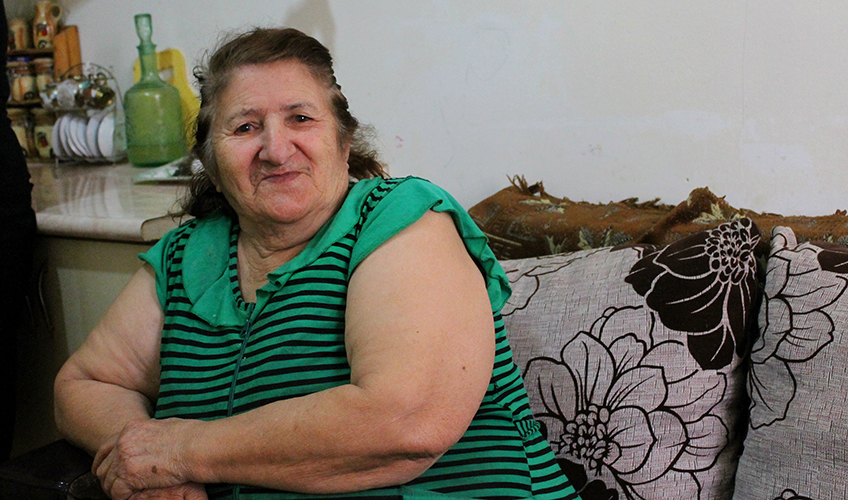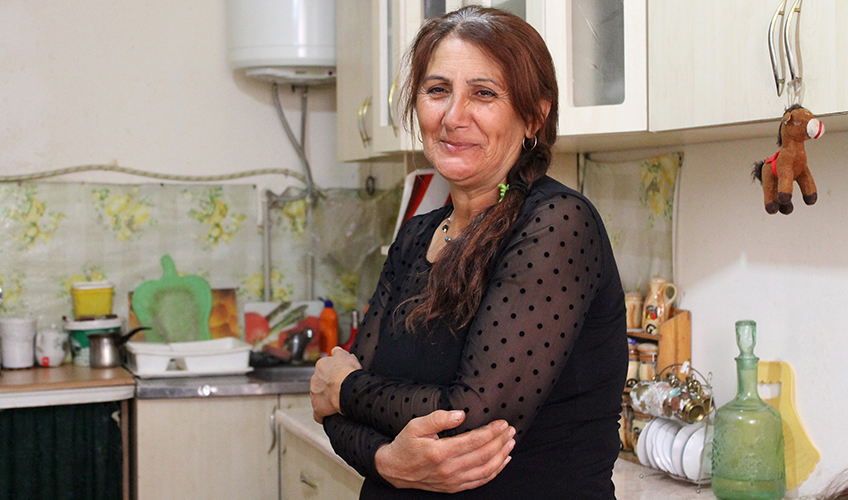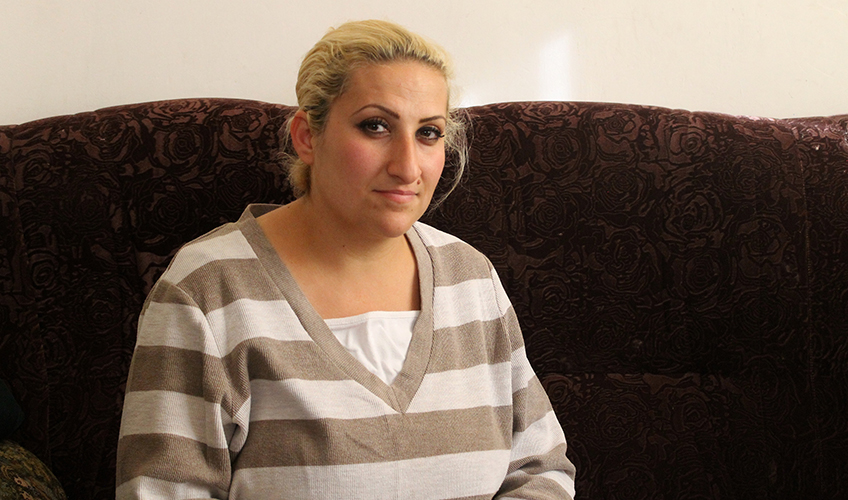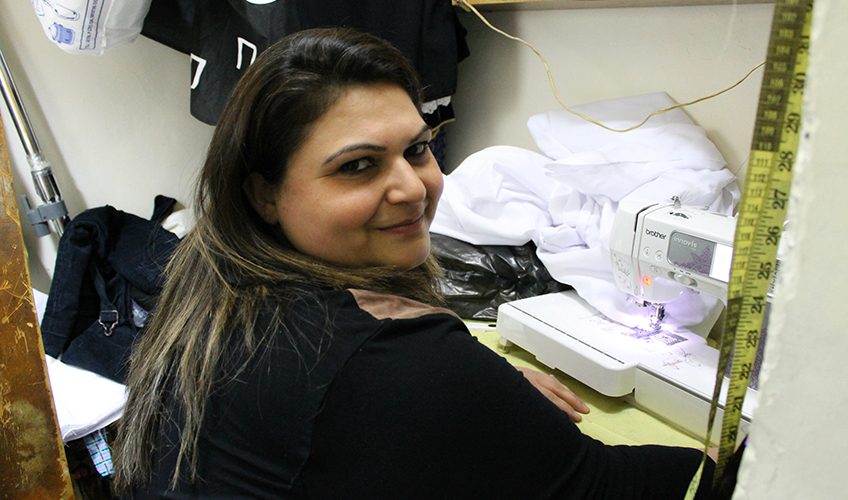Darbnik: A new home for Armenian refugees
Gayane Mirzoyan, a journalist from Armenia, writes about the people she met in Darbnik village in the Ararat Region of Armenia, where almost 90 percent of the population is made up of refugees from Azerbaijan, Iraq and Syria.
Lying just 10 kilometres from Yerevan, over the last 28 years Darbnik village has become home to refugees from three conflicts. In the early 1990s, Armenians fleeing the Armenian-Azerbaijani conflict in Nagorny Karabakh came here from Azerbaijan. In 2009, social housing appeared for refugees from Iraq, with 46 Armenian families from Iraq receiving accommodation. Several years later, they were joined by Syrian refugees.
Before the conflict in Nagorny Karabakh, the village – which used to be called Shorlu – was home to an Azerbaijani population. Its inhabitants then became refugees. Today, Darbnik village has 2,342 inhabitants. Almost all the families that came here were forced to start their new life in Armenia ‘from scratch’.

Finding safety
In 1989, Julietta Arutunian was forced to flee Baku, Azerbaijan, with her two daughters and grandchildren. Despite help from her neighbours and friends, remaining in Baku was becoming dangerous.
“Our block had 60 flats, and we were all friends. I’m still in touch with some of our neighbours on the internet. But in 1989, the attacks against Armenians began. One day, a crowd armed with axes began to break down our door. We phoned Bakhman, our local policeman, an Azerbaijani – he helped us to get out,” Julietta recalls.
Julietta’s daughter, Rada, managed to escape thanks to her courage and quick wit. With her excellent command of the Azeri language, she was able to convince the crowd of attackers, as well as the officials on the way to Baku airport, that she was not Armenian.

In a cruel twist of fate, when they arrived at their relatives’ home in Kokand, Uzbekistan, the family found themselves in the midst of another conflict – that in the Fergana Valley. “We had to hide under the table from the shooting. We had fled one danger, only to end up in the middle of a new one,” Rada recalls. On 1 January 1990, she gave birth to her daughter Ellada. In March of that year, the family moved to Yerevan.

The first refugee families were housed in an old college building in Darbnik. The Aruntunian family of seven was forced to share a single room in the halls of residence with a shared bath. Suddenly, ordinary everyday comforts turned into an impossible luxury.
“My brother and I slept in a box. One night, there was a fire. Our little ‘bed’ instantly caught fire and I had to be rushed to emergency care,” Ellada recalls.
Rada’s eldest daughter, Regina, and her four children still live in a flat lacking basic utilities. They live on child benefits and the decrepit building is unsafe for habitation.
“I’m scared of the children going out on the balcony – it could come crashing down at any minute,” she explains. “The courtyard is not safe, either. But we have nowhere else to go, so we stay there.”
After reams of letters from refugees, the state finally allowed the flats in the building to be privatised. The property is not in a decent state, yet for the refugees, who did not own a home, this was still good news.
A new wave of refugees

The Arutunians’ neighbour Karine Bagdoyan came to Darbnik from the Syrian city of Raqqa. Before the outbreak of civil war in Syria, Karine recalls, there were around 80 Armenian families living in the city. In 2013, Raqqa was occupied by the Islamic State terror group, which declared the city its capital. Karine and her family were forced to flee their native city.
Karine’s husband works repairing cars. She and her mother-in-law raise the couple’s two children. In October 2017, Raqqa was finally liberated, yet Karine’s family is unlikely to return: the once flourishing city now lies in ruins.
Ani Margaryan left Baghdad in 2004. In Iraq, the men are typically seen as the breadwinners in the family, she says. Now she is the only one earning a living in her family, which she is able to do thanks to her sewing machine – a gift from the United Nations Mission in Armenia.

My father always taught us that unless you work hard, you will have nothing. He wanted us to understand that money doesn’t just come out of nowhere, he wanted us to be able to earn it for ourselves. He didn’t just hand us loads of cash. He gave each of us our own small business – a hairdressers’, or a small shop. We lost everything in Baghdad, but now each of us has been able to pick ourselves up and carry on,” Ani says.
Ani met her husband in Armenia after he lost his first wife in Iraq. The two children from his first marriage came to live with him and Ani, and the couple now also have two children of their own.
“I remember Iraq with such warmth. We never used to notice who was from where. But after the government was overthrown, chaos broke out, and it became too dangerous to stay there. When they began to kidnap children, we got really frightened and left,” Ani explains.
After several years spent renting flats in Yerevan, the couple was finally given accommodation in the new building in Darbnik. Ani became active in pushing for better services in the village.
“When we first arrived, there was not much here. There was no football pitch, no kindergarten, no convenient transport. We began to put pressure on the authorities to sort things out, and eventually, minibuses appeared instead of the dusty buses, and began to run every half hour,” Ani recalls.
Read more stories from other journalists in the region
- Samira Ahmedbeyli, Azerbaijan
- Albert Voskanyan, Nargorny Karabakh
About the project
Gayane Mirzoyan, from Armenia, is one of the journalists taking part in this project and wrote the above story.
Unheard Voices is part of International Alert’s work on the Nagorny Karabakh conflict. The project brings together journalists from across Armenia, Azerbaijan and Nagorny Karabakh to report on stories of ordinary people who have suffered as a result of the conflict, whose voices are not usually heard. The purpose is to ensure their voices are heard both at home in their own societies and on the other side of the conflict divide, allowing readers to see the real faces hidden behind the images of ‘the enemy’. To view materials from all sides, challenging stereotypes and isolation.
This project is funded by the European Union as part of the European Partnership for the Peaceful Settlement of the Conflict over Nagorny Karabakh (EPNK).
The materials published on this page are the views of the journalist and do not necessarily reflect the opinions or policies of International Alert or our donors.






